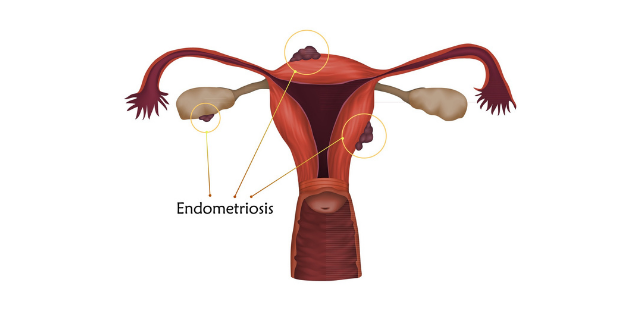01
Dec
Banned Pesticides Associated with Endometriosis

(Beyond Pesticides, December 1, 2021) Women exposed to metabolites of the banned insecticide chlordane are over three times more likely to develop endometriosis, finds research published in the journal Environment International. The study is the latest to find links between persistent organic pollutants (POPs), still lingering in our environment and in our bodies, and chronic disease. According to an economic analysis conducted in 2016, exposure to endocrine (hormone) disrupting chemicals, often implicated in considerable damage to the body’s reproductive system, results in billions of dollars of health care costs from female reproductive disorders.
Researchers set out to integrate two methodologies into their evaluation, combining analysis of POP biomarkers in blood with an analysis of biomarkers in that body that correspond with cell functioning, inflammation, and stress. A total of 87 women were enrolled in the study, half of whom had deep endometriosis, a quarter of whom also had the disease and sought surgical intervention, and a remaining quarter without reproductive concerns acted as a control. Twenty polychlorinated biphenyls (PCBs) and 30 organochlorine pesticide compounds were analyzed, as were various biomarkers and inflammatory cytokines.
The analysis revealed two compounds to be positively associated with endometriosis – trans-nonachlor, a breakdown product of the banned organochlorine insecticide chlordane, and PCB 114 (there are 209 different PCB compounds), with odds ratios of 3.38 and 1.83, respectively. Compared to the control group, those with endometriosis also had higher total levels of PCB in their blood. Scientists also identified cytokine biomarkers, determining that women with higher levels of these compounds in their bodies were more likely to have endometriosis with endometrioma. According to the study, “Results suggest the role of certain POPs in promoting pro-inflammatory metabolic conditions which may be involved in the development of severe endometriosis.”
Although the authors note the need for additional, larger studies, there is already a considerable body of literature linking POPs and other legacy chemicals to chronic female reproductive diseases. Research published in 2012 found links between high blood levels of hexachlorocyclohexane (HCH), a breakdown product of the insecticide lindane and endometriosis. A 2013 study looking at technical grade organochlorine insecticides lindane and mirex found similar results. In that study, women with the highest levels of mirex in their bodies had a 50% greater risk than women with the lowest levels. For lindane, the risk was higher, at 70%. While both chemicals have long been banned on food crops, lindane is still permitted for use by the U.S. Food and Drug Administration to kill head lice.
While the long-term dangers of organochlorine insecticides are now well known, organophosphates insecticides developed to replace these hazardous chemicals pose similar health risks. A 2019 study found that both the metabolite of the organophosphate diazinon and a breakdown product of the organophosphate chlorpyrifos were both associated with increased risk of endometriosis. While risks from breakdown products are likely to be similar to effects seen with the parent compound, there is growing evidence that these metabolites are even more toxic than the original compound. Relevant to the current analysis, a 2021 study found that many of these breakdown products may exhibit MORE powerful endocrine-disrupting impacts than its parent chemical.
The decision to approve a pesticide has effects that ripple across the future. In the U.S. these decisions, made under a cloak of secrecy that skirts public oversight, are often unofficially approved before even reviewing the science, with agencies receiving “yes packages” from powerful individuals connected to the pesticide industry. But the impacts of these decisions have real impacts on the health of individuals, and the subsequently trajectory their lives take. These health impacts also weigh down economic potential, costing billions of dollars in health care.
When viable alternatives to the use of hazardous pesticides are available, we must deny pesticide registrations in favor of safer practices, and less toxic compounds. Join today with Beyond Pesticides and 37 other health, farming, beekeeper, and environmental groups urging major reforms at the U.S. Environmental Protection Agency.
All unattributed positions and opinions in this piece are those of Beyond Pesticides.
Source: Contemporary OB/GYN, Environment International











Please regulate to protect health not corporations.
While the long-term dangers of organochlorine insecticides are now well known, organophosphates insecticides developed to replace these hazardous chemicals pose similar health risks. A 2019 study found that both the metabolite of the organophosphate diazinon and a breakdown product of the organophosphate chlorpyrifos were both associated with increased risk of endometriosis. While risks from breakdown products are likely to be similar to effects seen with the parent compound, there is growing evidence that these metabolites are even more toxic than the original compound. Relevant to the current analysis, a 2021 study found that many of these breakdown products may exhibit MORE powerful endocrine-disrupting impacts than its parent chemical.
December 3rd, 2021 at 12:22 pm